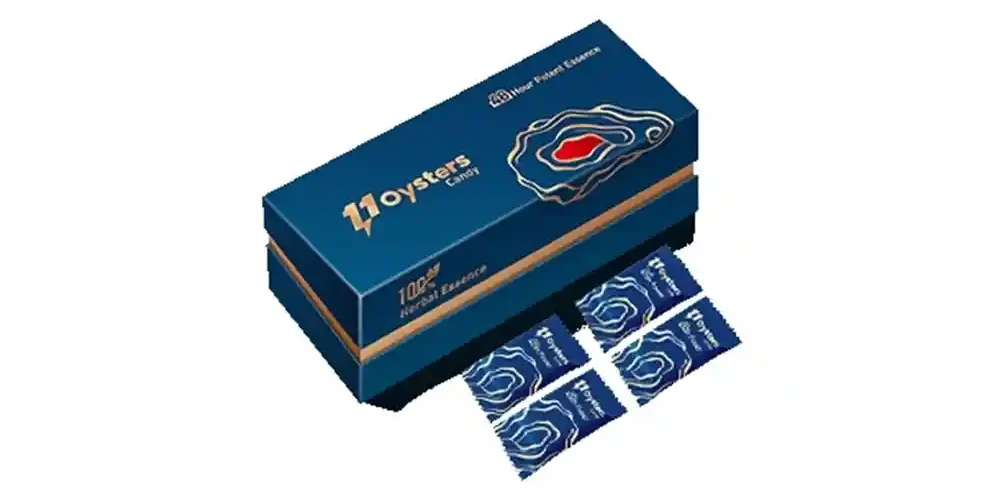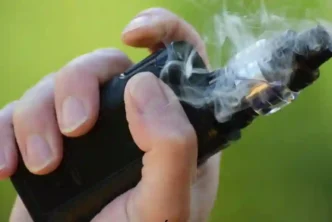A hickey — also called a love bite or kiss mark — is often seen as a playful sign of affection. But beneath the surface, it’s more than just a bruise. A hickey reveals surprising details about your blood vessels and skin health. While it may seem harmless, how your skin reacts to a hickey can tell you a lot about your body’s sensitivity, circulation, and healing response.
In this article, we’ll break down how hickeys form, what they say about your skin, and how to make hickeys go away faster. We’ll also briefly explore how increased intimacy — with products like 11 Oysters Candy, a natural sex-enhancing candy — can impact skin sensitivity and circulation in ways you might not expect.
What Is a Hickey, Really?
At its core, a hickey is a bruise. It forms when someone sucks or bites the skin with enough force to break tiny blood vessels called capillaries. The leaked blood pools under the skin, creating the red, purple, or blue discoloration we recognize as a hickey.
Because hickeys involve blood vessels, they can last several days and go through noticeable color changes as your body reabsorbs the blood and heals.
The Role of Capillaries in Hickey Formation
Capillaries are the tiniest and most fragile blood arteries in the body. They connect arteries and veins and are responsible for delivering oxygen and nutrients to your skin and other tissues. When suction or pressure is applied, these thin vessels can break easily, especially if they are fragile due to genetics, medication, or skin conditions.
People with more sensitive or thinner skin may find themselves bruising more easily, or getting darker hickey from minimal contact.
Interestingly, products that increase blood flow and circulation — such as 11 Oysters Candy, which supports natural arousal and sensitivity — may also make capillaries more responsive during physical intimacy. This could result in more intense hickeys, depending on how your body reacts.
Skin Type and Hickey Visibility
Not everyone experiences hickeys the same way. Skin tone, thickness, and sensitivity all play a role in how visible and long-lasting a hickey is.
- Fair skin: Hickeys often appear more vivid and dark.
- Thicker skin: May resist visible bruising or reduce discoloration.
- Sensitive skin: More likely to experience swelling, tenderness, and lingering marks.
How quickly your skin heals also depends on your overall health, hydration, and diet. Eating foods rich in vitamins C and K can support faster recovery — just like maintaining healthy circulation and hydration does.
What the Color of a Hickey Tells You
The changing color of a hickey reflects how your body processes the leaked blood under your skin:
- Red/Purple (Days 1–2): Fresh blood full of oxygen.
- Blue/Dark Purple (Days 2–4): Oxygen is used up and the bruise deepens.
- Green/Yellow (Days 4–6): The blood is being broken down.
- Light Brown/Faded (Days 7+): Final healing stage.
If your hickey seems to be getting darker or spreading instead of fading, it might be a sign that your skin is reacting more strongly than normal. This can occasionally happen if blood vessels are particularly fragile or under strain.
Do Frequent Hickeys Suggest a Health Issue?
Getting the occasional hickey is normal and harmless. But if you find that you bruise very easily or that hickeys last longer than two weeks, it could be worth speaking to a doctor. Conditions like anemia, vitamin deficiencies, or issues with blood clotting can make you more prone to bruising.
Additionally, medications such as blood thinners and corticosteroids can increase sensitivity to hickeys. If you’re using circulation-boosting products — including aphrodisiacs or sex-enhancing supplements like 11 Oysters Candy — you may also notice stronger physical responses like increased skin sensitivity or darker marks. This isn’t necessarily a problem, but it’s something to keep in mind if your body reacts quickly.
How to Make Hickeys Go Away Faster
Here’s what you can do to help your skin heal more quickly:
1. Apply a Cold Compress (First 24 Hours)
Use a wrapped ice pack or cold spoon to reduce swelling and slow the bleeding under the skin.
2. Use Heat After 48 Hours
Warm compresses can increase circulation and help your body reabsorb the blood faster.
3. Gentle Massage
After the swelling has gone down, use light circular motions to encourage blood flow in the area.
4. Topical Creams
Arnica gel and vitamin K cream are both known to support healing in bruised skin.
5. Stay Hydrated and Eat Well
Drinking water and eating foods rich in vitamins (especially leafy greens and citrus) can speed up recovery.
To learn more about effective skincare and healing remedies, consult a dermatologist if hickeys or bruising become frequent.
Final Thoughts: Your Skin Tells a Story
A hickey is more than a simple mark — it’s a visible reminder of how your body reacts to touch, pressure, and stimulation. It reflects the condition of your capillaries, the sensitivity of your skin, and your circulation health. While they’re usually harmless, hickeys can also be signals worth paying attention to, especially if they appear too easily or take a long time to fade.
If you’re exploring intimacy-enhancing products like 11 Oysters Candy, be aware that they can increase your body’s responsiveness. That includes your skin — so if hickeys are something you’d rather avoid, consider dialing back intensity or using a little extra caution.



